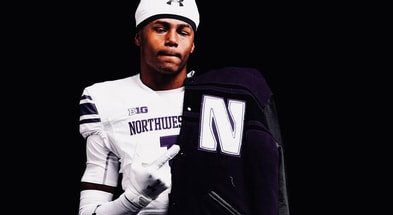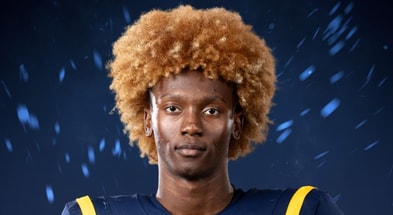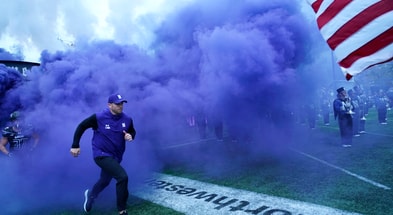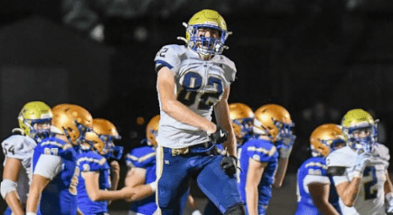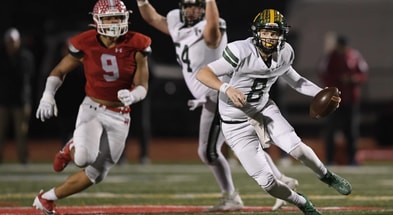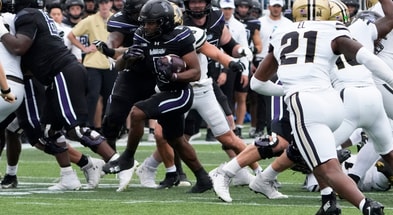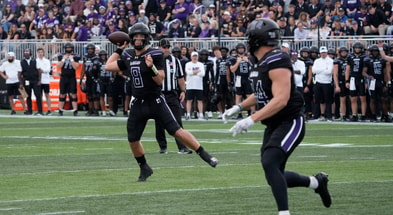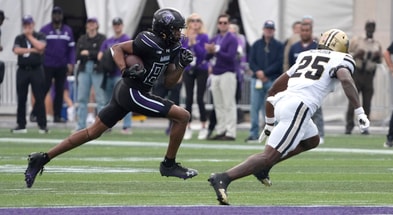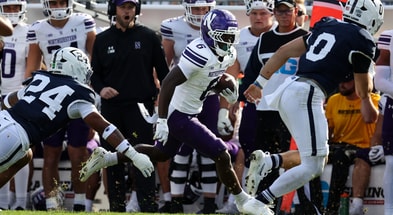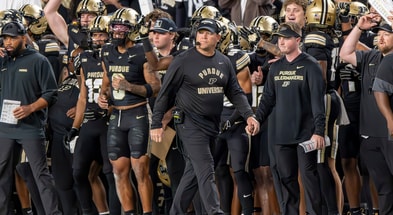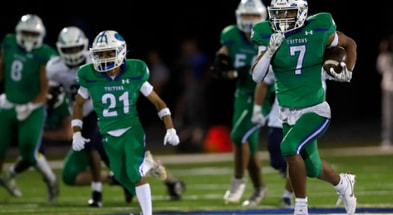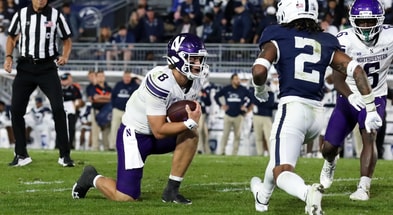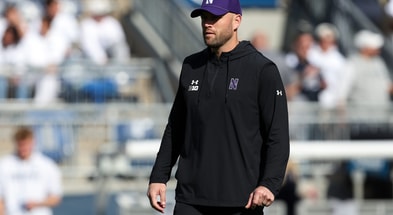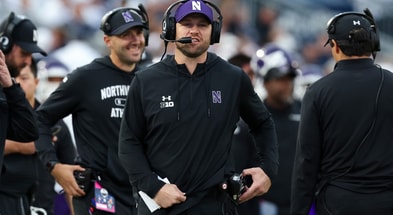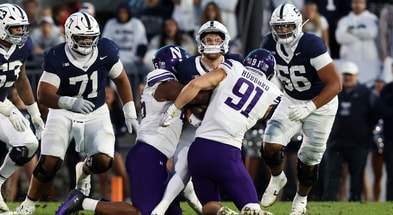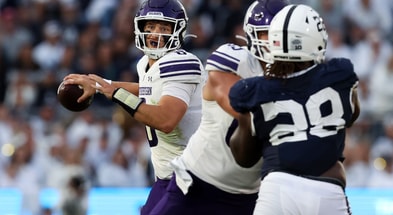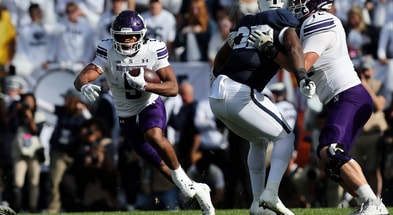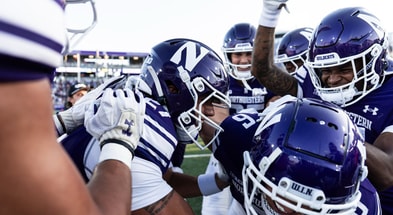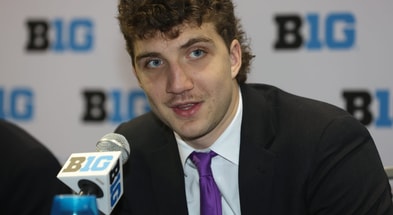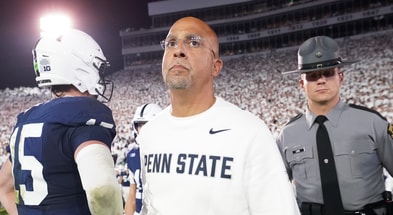Five Northwestern storylines to watch at Big Ten Media Days

Big Ten Media Days kicks off in Las Vegas on Tuesday, running July 22-24. Northwestern’s day on the dais is July 23, when head coach David Braun will take the stage for questions, along with three player representatives: quarterback Preston Stone, defensive end Anto Saka and running Joseph Himon II.
I will be in Vegas reporting for WildcatReport. Here are five storylines you should keep an eye on:
1. Quarterback clarity
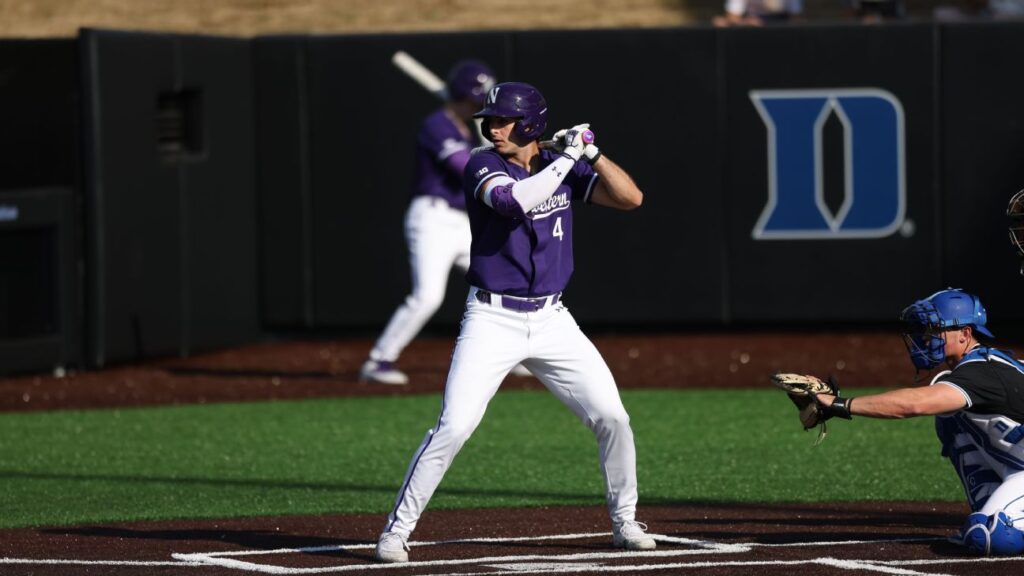
Every tea leaf, smoke signal and divining rod about the quarterback position points towards two things: Stone will be the starter, and Jack Lausch, who started 10 games last season, will not be playing football in order to pursue his baseball career.
To recap, Stone is a highly touted transfer from SMU. He has a premier pedigree as a four-star recruit out of high school who chose SMU over 40+ offers. In his last full season as the starter, he led SMU to a 10-2 record in 2023, throwing for 3,197 yards and 28 touchdowns before suffering a broken fibula in the Mustangs’ season finale against Navy. He began last season as the starter but lost it to Kevin Jennings, who eventually led SMU to the College Football Playoff.
With Jennings returning, Stone entered the portal for his final season of eligibility. Northwestern leapt at the opportunity and recruited him out of the portal. He has been the prohibitive starter since, taking the majority of reps with the first team throughout spring ball, including at the team’s open practice on April 19. He is the first quarterback to represent Northwestern at Media Day since Clayton Thorson in 2018.
Lausch prioritized baseball after Stone’s commitment, choosing to play both sports in the spring. After three years solely focused on football, his scholarship sport, Lausch returned to the diamond and played centerfield for the Wildcats this winter and spring. He missed a few football practices, including the open practice on April 19, for baseball games and travel.
It took Lausch some time to shake off the rust, but he finished the season with a .268 batting average and six home runs. This summer, he played 17 games with the Williamsport Crosscutters in the MLB Draft League in hopes of being chosen in the 2025 MLB Draft. He wasn’t selected and no longer appears on the Crosscutter roster, but he could still return to NU to play baseball, or pursue an undrafted free agent opportunity.
In the clearest signal of all, Northwestern seemed to prepare itself for Lausch’s departure by adding quarterback Gavin Frakes out of the transfer portal on June 25. The Wildcats probably wouldn’t have felt the need for a veteran to back up Stone if they knew Lausch was still on the roster. Frakes transferred to Oklahoma and then Northwestern this offseason after two seasons without playing at Virginia. His last season seeing action was in 2022 for New Mexico State, where he threw for 736 yards, with four touchdowns and seven interceptions.
In a recent social media post from the program, freshman quarterback Marcus Romain is seen wearing No. 12, the number Lausch has worn the last three seasons. All signs point towards Stone as the starter and Lausch dropping football to focus on baseball, Media Day may give Northwestern fans confirmation.
2. Revenue share era percentage and policies
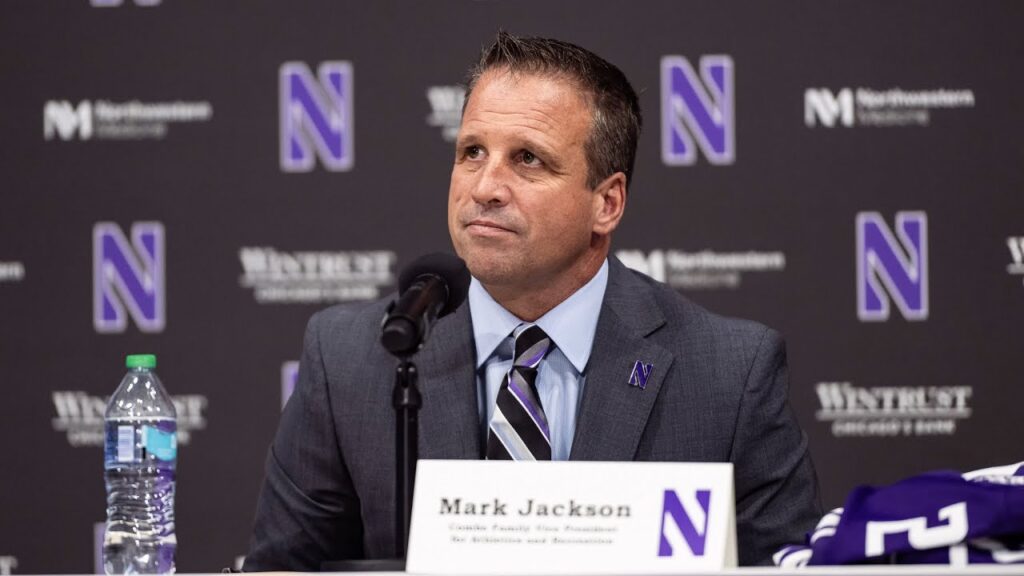
Northwestern reportedly plans to fully fund the $20.5 million that universities are allowed to directly compensate athletes with via the House settlement. But what does that mean for the football program? How big is their slice of the pie?
Schools that have publicly disclosed how they will share their revenue vary in their allocations to football. Texas Tech has been one of the most open athletic departments about their plans, stating last December to the Lubbock Avalanche-Journal that they plan to allocate 74% of their funds to football and 17% to men’s basketball alone. Those numbers would mean roughly $15.2 million for the gridiron and $3.5 million for the hardwood.
Northwestern is typically stingy with information about these types of matters. They can flex their private-school status and keep their finances close to the vest. Chances are, the Wildcats’ situation will be different than Texas Tech’s.
First and foremost among the differences will be men’s basketball. Head coach Chris Collins just inked a contract extension, and you can bet that he put pen to paper with a guarantee that his program’s percentage of that $20.5 million was competitive around the Big Ten. That likely means well above a $3.5 million budget; some believe it will be around $6 million.
Tech’s model leaves about 9% of the $20.5 million for other sports, such as softball, baseball and women’s basketball. There are plenty of proud programs at Northwestern that will want to stake out a corner of that remaining percentage, or even push it higher. Women’s golf and field hockey both won national titles last season, and lacrosse was the runner up. You can expect the Wildcats’ allocation to continue to support the excellence of those programs.
One of the reasons Tech has been so open with their plans is they have one of the deepest checkbooks in the nation right now. On3’s Pete Nakos reported that the Red Raiders will spend $28 million on their football roster alone this season. National title contenders and aspirational programs like Tech plan to use NIL to spend well over the revenue share limit going forward, and the ability of the NCAA’s NIL clearinghouse to stop or slow that spending is unclear.
What is Northwestern’s planned budget for football? Do they have similar plans to push past the $20.5 million mark? If not, can football be competitive in the deep-pocketed Big Ten with their share?
3. What is the role of new GM Christian Sarkisian?
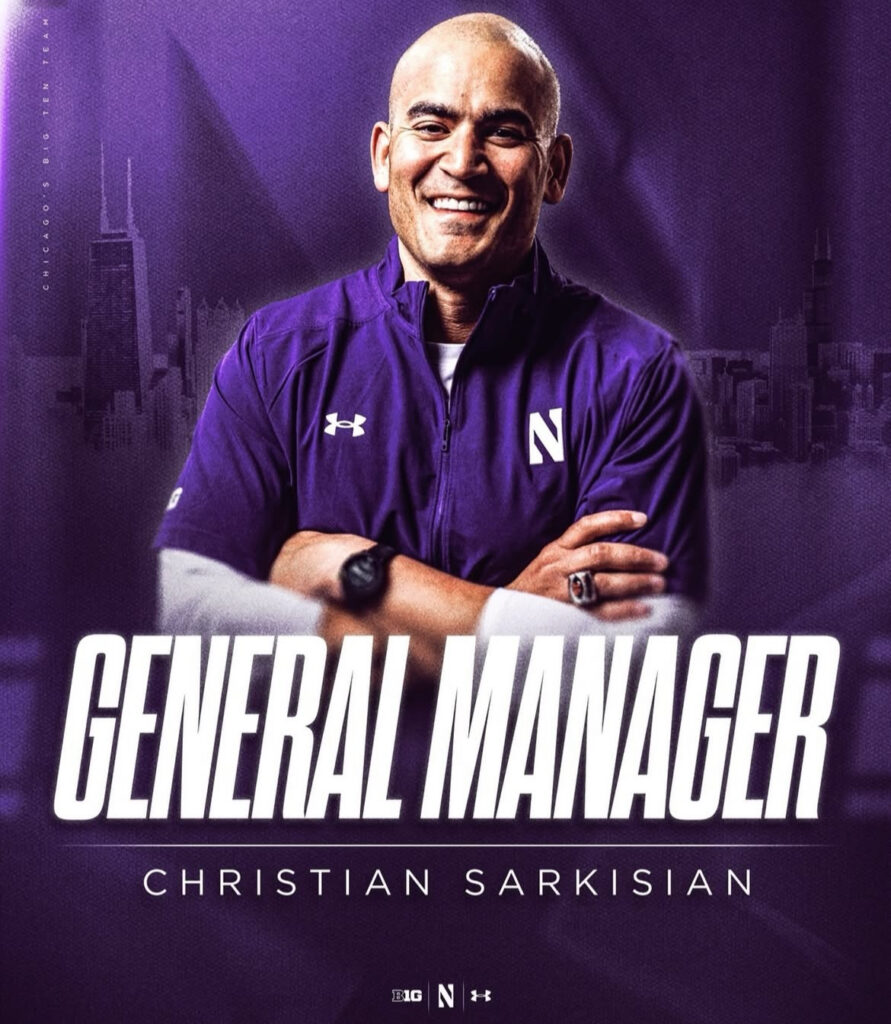
With the revenue share era fast approaching, Northwestern hired a department-wide general manager in May: Christian Sarkisian. Sarkisian joins the athletic department to oversee the “operational functions related to the NCAA House settlement” per the department’s website. It’s an increasingly common role across college sports as schools create a position to lead their revenue distribution by program, and by athlete. Sarkisian’s background and early work suggest he will play an increased role around the football program.
He worked as the assistant director of player personnel and a recruiting assistant for Northwestern football from 2015-17 while getting his master’s degree in sports administration, then worked for the Cincinnati Bengals as a scout for seven years before taking this position. Sarkisian’s role is further described as “[leading] student-athlete evaluations, contract negotiations and [accountability] for the Name, Image, and Likeness (NIL) clearinghouse.”
Sarkisian has not yet been made available for an interview and is not expected to be at Media Day, so we’ll likely have to wait for details on his oversight of other sports. But Braun can shed light on his role in the football program. Sarkisian isn’t a pencil-pushing bureaucrat; he’s steeped in the specifics of football and has immediately made an impact with the team.
Recruits and prospects have mentioned interacting with Sarkisian on official visits and at team camps in May and June, implying he is at the very least taking part in pitches to high school players, if not conducting his own evaluations. Northwestern football already has a general manager for roster development in Luke Walerius, and it will be interesting to see how his role and Sarkisian’s will work together.
So where does that leave Sarkisian? Is his job to give Braun and Walerius a pot of money and paper the deals as they come in? How involved will he be with the allotment going to each player? Will he be involved in the decision process to offer high school and transfer prospects? Does his presence on visits mean that Northwestern is willing to negotiate contracts with high school players?
4. Northwestern’s strength of schedule
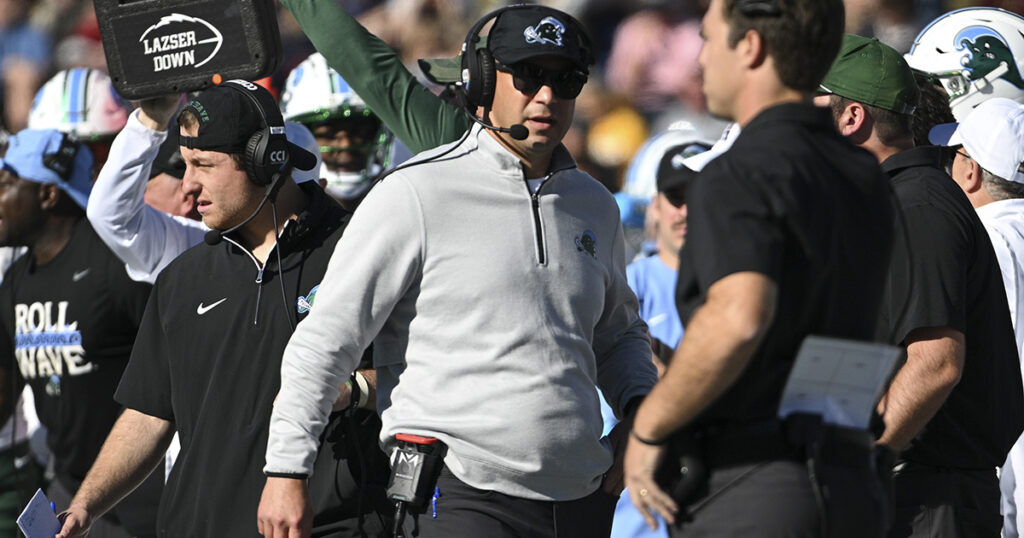
The Wildcats open the season with a road trip down to Tulane, a 900-plus mile journey to the searing heat of August in New Orleans to play a Group of Five team that won nine games last season. The only other Big Ten team to play a road game at a G5 team that won 9+ games last season is UCLA, who will play at UNLV on Sept. 6.
In 2026, Northwestern will host Colorado, a Big 12 team that went 9-4 last season. They’ll have a return game at Colorado in 2027. In 2028, they’ll host UCF, another Big 12 team. In 2029, they play at Rice.
That’s five straight seasons, from 2025-29, when Northwestern will either travel 900-plus miles, play a Power Four program, or do both, for a non-conference game. Some of this scheduling adversity comes from shifting tides from when these games were set in 2017 (Colorado) and 2018 (Rice, Tulane), although UCF was added in 2024.
Northwestern went 19-8 with two bowl wins over the 2017 and 2018 seasons, while Colorado was winning around five games a season. Head coach Willie Fritz, who is now at Houston, had just started his rebuild at Tulane and was hovering around bowl contention. Rice was struggling, as they still are today.
Now, however, Colorado’s program has been transformed under dynamic head coach Deion Sanders. We’ll see how sustainable it is, but he’s turned the Buffs into at least a short-term force in the transfer portal and on the recruiting trail that can bring in NFL talent. Tulane is consistently competitive for American Conference titles and may even compete for playoff spots going forward as the G5 representative.
Northwestern isn’t riding a 19-8 run in the past two seasons and they aren’t in the Big Ten West anymore. Their last two campaigns combined have produced a 12-13 record. Extend that back to the last four seasons, and it’s 16-33.
Other programs in the Big Ten, most notoriously Indiana, are calling a spade a spade and scheduling extraordinarily easy non-conference slates. The Hoosiers play Old Dominion, Kennesaw State and Indiana State, all at home, in 2025. Maryland’s slate includes Florida Atlantic, Northern Illinois and Towson. Rutgers plays Ohio, Miami (Ohio) and Norfolk State. All are buying themselves as many home non-conference games against weaker opponents as they can.
Will the new college football landscape lead Northwestern to examine the buy-outs of some of their upcoming non-conference tests? Or will they continue to challenge themselves outside of the gauntlet that is the Big Ten?
5. Transfer portal satisfaction
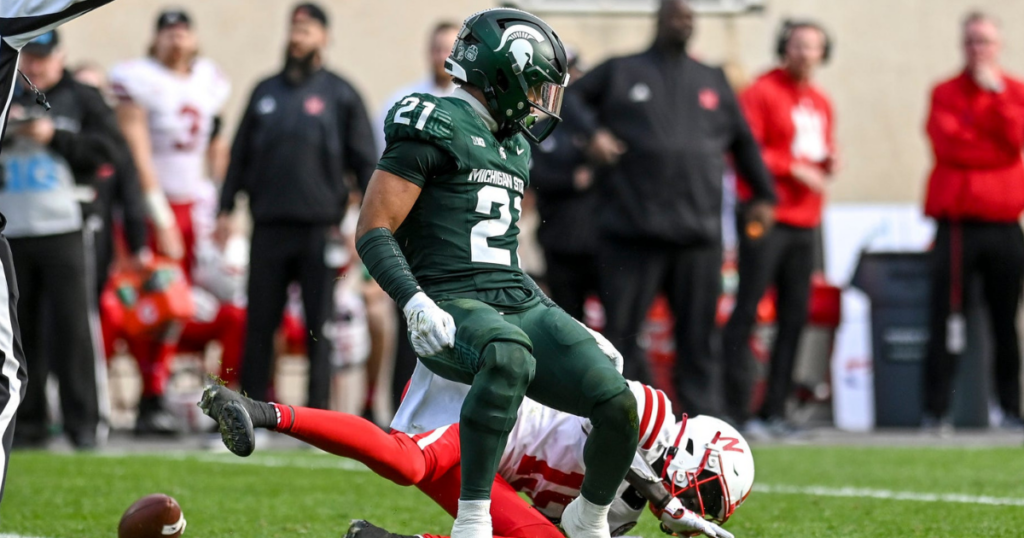
Northwestern set a new program-high in the portal this offseason by bringing in 14 transfers. The Wildcats landed players across the roster, including quarterback, wide receiver, tight end, offensive line, defensive line, linebacker, defensive back and even long snapper.
The program’s ability to get players in quickly has been limited in the past by the quarter system and admissions processes, but a new streamlined system allowed them to recruit many players who came in and enrolled immediately in January so that they could participate in both winter conditioning and spring ball. They continued to stay aggressive throughout the spring, making two key additions from Power Four programs with defensive back Dillon Tatum from Michigan State and linebacker Jack Sadowsky V from Iowa State in May, plus Frakes in June.
After the loss to Illinois at Wrigley Field to end the season, Braun said the way that Northwestern operates would be turned on its head, and their portal performance is indicative of that. The dust has mostly settled on the portal and the only players who could add their names now are players whose head coach was fired, or grad transfers.
Do the Wildcats like where they ended up? Braun will no doubt say they are, but deep down, are their remaining positions of need he wishes they had capitalized on?
